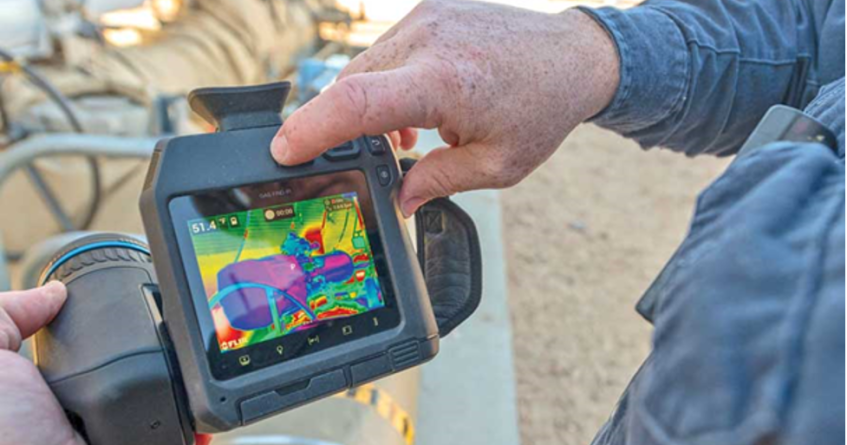Detecting What’s Invisible: The Science of SF6 Leakage Cameras
An increasing requirement for dependable power solutions has led to the general application of SF6, or SF6, in power networks. This powerful greenhouse gas is known for its remarkable insulating properties, but it presents significant environmental hazards when leaks occur. For this purpose, SF6 leak identification has emerged as a crucial part of preserving frameworks in power generation and distribution. To efficiently detect these ruptures, technicians rely on state-of-the-art technology, particularly SF6 leak identification cameras.
Such specialized cameras are built to detect the typically invisible gas, providing a clear representation of escapes that can frequently go undetected by standard methods. Grasping how these devices work not only highlights their value in ensuring safety but also underscores their role in protecting the environment. By taking advantage of innovative techniques, operators can swiftly find and tackle leaks, finally helping to minimize the negative effects of SF6 on our environment.
How Sulfur Hexafluoride Leak Cameras Function
SF6 gas leak detection cameras utilize cutting-edge infrared technology to detect SF6 leaks in various environments. These cameras are exclusively designed to identify the unique thermal signature emitted by sulfur hexafluoride gas. When a gas leak occurs, the gas disperses and can be seen using the camera, which captures the distinct absorbent properties of the infrared light spectrum associated with SF6.

The cameras function by utilizing an infrared sensor that can detect the concentration of SF6 in the air. By examining the infrared radiation emitted from the environment, the camera can differentiate between sulfur hexafluoride and other gases. When a user points the camera towards a potential leak, it displays a visual representation that marks areas with elevated concentrations of the gas. This allows users to quickly and accurately identify the specific location of the leak.
In along with recording images, numerous SF6 leak detection cameras also offer real-time data analysis and reporting features. This capability improves the efficiency of leak detection, enabling technicians to track changes in gas concentration over time. The integration of thermal imaging and sophisticated software guarantees that businesses can maintain safety standards and regulatory compliance while reducing the environmental impact of SF6 emissions.
Applications of SF6 Leak Monitoring
Sulfur Hexafluoride leak detection cameras are chiefly used in the power industry to detect leaks in high-voltage circuit breakers, transformers, and various equipment that use SF6 gas. The electrical properties of SF6 make it a popular choice for maintaining safe electrical environments; however its greenhouse gas potential means that any leaks must be detected and resolved swiftly. By utilizing an SF6 leak detection camera, technicians can visually pinpoint where the gas leak, guaranteeing that equipment operates efficiently and in accordance with environmental regulations.
In furthermore to the power industry, these cameras have applications in scientific and testing facilities. They are used to observe experimental setups that involve sulfur hexafluoride, helping scientists and engineers verify that their systems are sealed properly and operating as intended. This capability is essential in avoiding the unintended release of SF6 during experiments and safeguarding both personnel and the environment.
Another notable application is in the inspection and maintenance of subsurface utilities and distribution networks. SF6 is used in gas-insulated switchgear and various underground substations. Leak detection cameras provide a non-destructive means to supervise these installations, allowing for the early identification of leaks that could threaten system integrity and safety. Regular checks using SF6 leak detection technology help utility companies maintain reliable service while minimizing their carbon footprint.
Benefits of Using Sulfur Hexafluoride Gas Leak Cameras
One of the major benefits of using SF6 leak detection cameras is their ability to identify leaks rapidly and successfully. Conventional methods of detecting gas leaks, such as gas sniffers or pressure testing, can be time-consuming and may not always pinpoint the precise location of a leak. SF6 leak cameras provide immediate visual feedback, allowing technicians to see the gas emissions in real time, leading to faster maintenance and minimized downtime in manufacturing settings.
Another important advantage is the enhanced safety provided by these cameras. SF6 is a highly effective greenhouse gas, and even minor leaks can have serious environmental impacts. By using an SF6 leak detection camera , companies can lower emissions, comply with environmental laws, and ensure a healthier working environment for their employees. This forward-thinking approach to leak detection helps in protecting both the Earth and the health of the workforce.
Additionally, SF6 leak cameras can lead to cost savings over time. By detecting and addressing leaks promptly, organizations can avoid the financial repercussions associated with wasted gas, regulatory fines, and potential damages from environmental violations. Allocating resources in this equipment not only promotes responsible environmental practices but also contributes to the financial performance by improving operational efficiency and resource management.